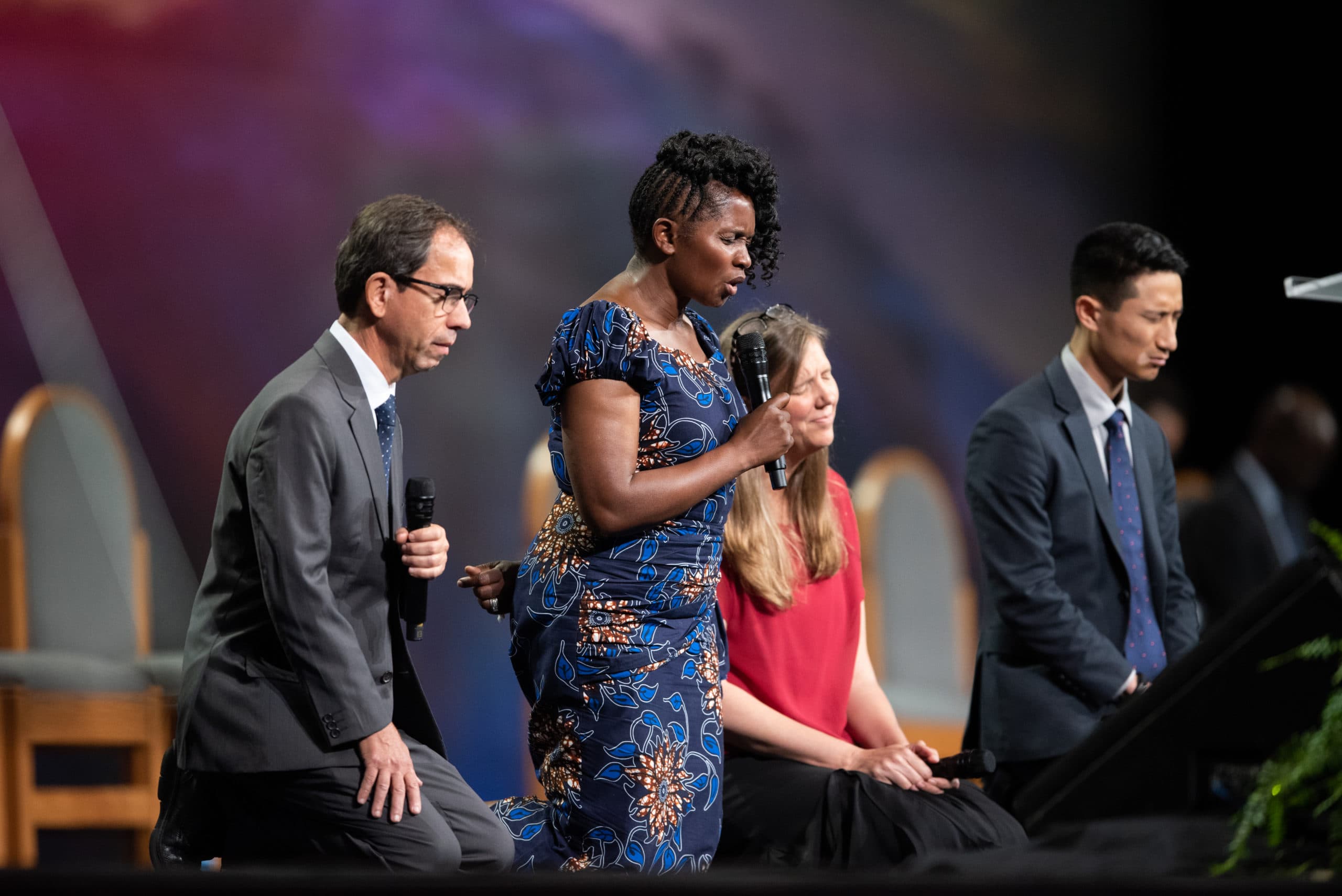
As you exit the elevator on the fifth floor of the Dome at America’s Center in St. Louis, a sign reads “Broadcast Media.” The area that was once home to sports reporters is transformed for the week of the 61st General Conference Session into a space for interpreters to listen to the Session and relay each presentation continuously to those not able to understand English.
Simultaneous interpreters play one of the key roles in a Session communicating to a global church. According to the General Conference Office of Archives, Statistics and Research, more than 500 languages are used in Adventist publications. So it seems only fitting that a global church established in more than 200 countries would devote resources and effort to these international members.

Longtime interpreters coordinator Odette Ferreira retired at the end of the 2015 session, so the responsibility has now fallen to British Columbia pastor Roger Esteves. He receives significant assistance from General Conference treasury staff member Theophile Voilquin. Together they are coordinating a group of 45 translators in eight languages: Korean, Chinese, German, Romanian, Russian, Portuguese, French, and Spanish. Many are church employees, but a good portion of the interpreters are volunteers who took vacation from their private or public sector jobs, including one who’s a professional interpreter for the United Nations.
Hard Work
For the uninitiated, the job of simultaneous translating may look easy. But it’s far from it.
Esther Val Bonzil of Canada, who interprets from English to French, explains: “It requires for your mind to hear at the same time as you process the information, and then turning it into another language that you speak, while at the same time listening to the next sentence.”
To alleviate some of the burden of trying to figure out the speaker’s words on the fly, advance copies of presentations are sometimes available. But since that’s not always the case, working in shifts is recommended to give the brain a break. Esteves has organized the group so that interpreters are paired together and are encouraged to take turns working for 30 minutes at a time. But he allows flexibility. For instance, when there’s a video presentation, the Portuguese interpreters enjoy working together by alternating voices for the various speakers.

But there’s one interpreter who doesn’t have the luxury of a teammate. Marius Andrei is the only Romanian translator, and so far he seems to be doing fine. He says he never received formal training in learning English and considers his ability to speak the language a gift from God. While it’s not easy conducting simultaneous translation for upwards of 12 hours a day, by God’s grace he presses on. “It’s not easy for the delegates to stay in the [dome] and listen to all the explanations and vote all the time, so I’m doing the same thing,” he surmises. He also has a choice. “If I cannot do it anymore, I will take a break and start again.”
Possible Challenges
Some of the challenge for the interpreters is unfamiliar technical words and phrases. Words such as bylaws, amendment, or even division—as in the phrase “world church divisions”—can present an issue, according to Spanish translator Ismael Castillo.
Castillo is part of a six-person simultaneous interpretation team from the Texas Conference, and he says that in addition to wrestling with technical words, they are sometimes faced with the difficulty of interpreting Spanish speakers from other parts of the world. “In the U.S. you know how someone expresses a thought, how it begins and you kind of know where it’s going,” he explains. “But when you have someone from [countries outside the U.S.], I found myself interpreting and then halfway through, I don’t know where that person is going, and I feel kind of insecure. I had to stop a little bit, because at the end of the day, you don’t interpret word by word, you interpret thoughts.”

Overall, the interpreting operation seems to be humming along smoothly, with few hiccups.
Esteves says the reality of managing the simultaneous interpretations hit him last week: What if a repeat of San Antonio happened, where suddenly the meeting came to a halt because of a technical issue? He imagined this scary scenario. “Everybody’s going to be looking up to where we are, and say, ‘What are you guys doing up there?’ ”
He laughs and says, “I’m determined to not let that happen.”
Follow the proceedings of the 61st General Conference Session at adventistreview.org.